Yes, you can take your bike on the train, but we did find this the hardest and most stressful part of traveling with a bike in Europe. And the least predictable. Don't make your trip or time table contingent on catching a particular train!
I'm hoping that this page helps someone (please do leave a comment!). I possibly have an advantage over other travelers in that I speak Dutch, German and French to some extent - and still I struggled to figure out how things worked. For the material below, I assume we're dealing with a full-size bike; if you have a fold-up bike you may be able to treat it like a piece of luggage, but there are maximum dimensions for this - check your train company's site!
Getting around by train in Europe is easy and beautiful, finding your train and getting on it with a bike is the challenge as space may be restricted, and physically getting the bike on may be hard.
Highly recommend to download a map of the stations if you have to transfer trains with a bike, to know where the elevators are (or even if they exist) and how to get from your arrival platform to your destination platform - for which you may have limited time. For example, here is Koln station:
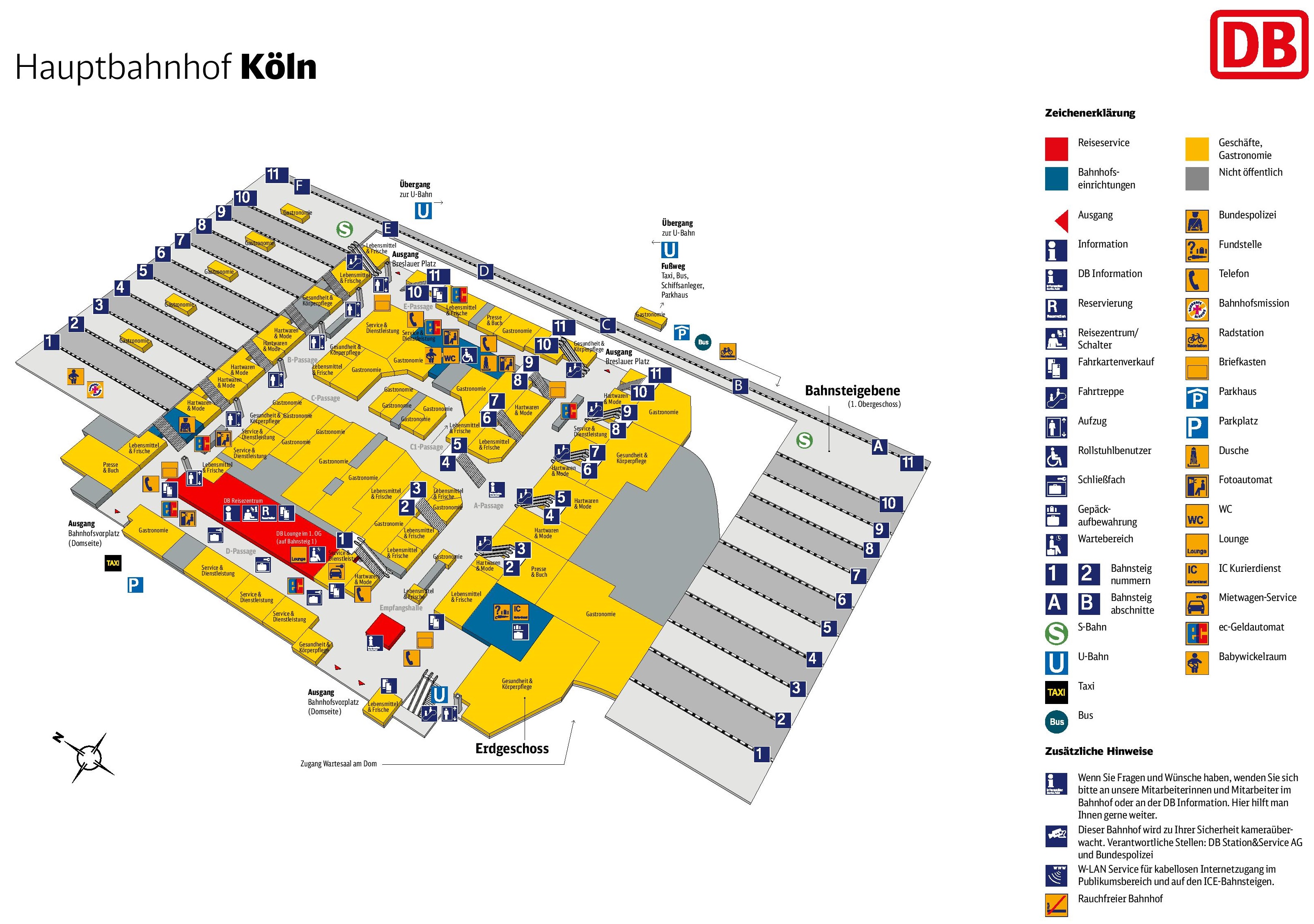
And finally, one more thing to be aware of: city names usually have multiple versions, depending on the language used. Make sure you know that Köln (German) is also called Cologne (French), Ghent (Dutch) is also called Gand (French), Brussels (Dutch) and Bruxelles (French).
The Netherlands
In the Netherlands, you can take your bike onto some of the carriages that have a space especially assigned to bikes; where there will be room for 3 or so bikes. Often they will also let you hoist your bike into the area where you get onto the train and before you go into the seating area. There is no special room for bikes but there are usually a few fold down seats you can use and lean your bike up against a wall or yourself.
IMPORTANT: see that button next to the door in the picture below? Train doors do not always automatically open at the station, you may have to push a button.
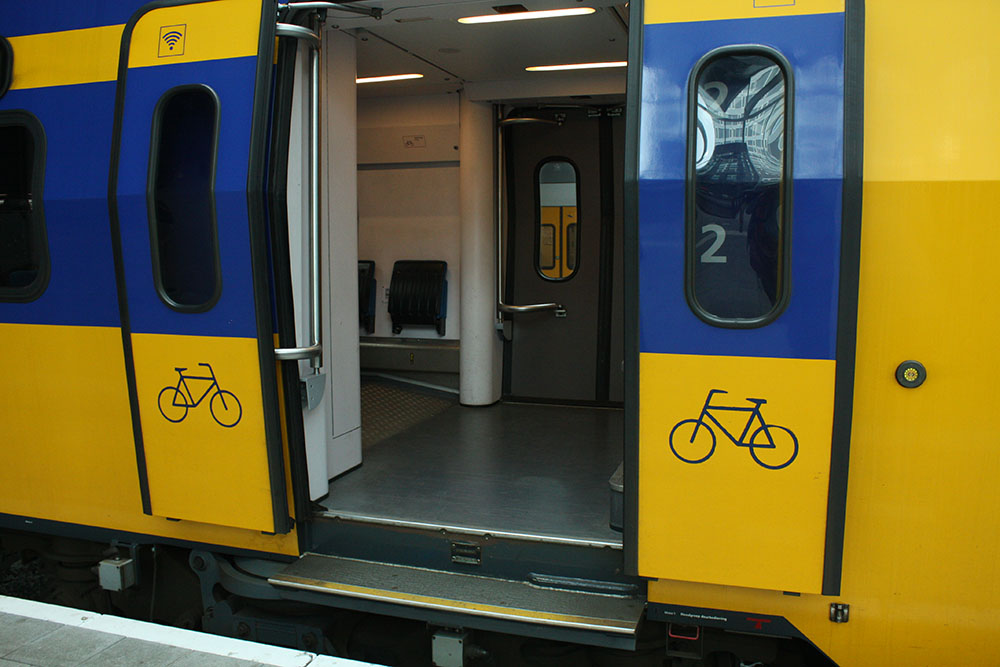
Officially there is a limit to the number of bikes allowed in any given area, and depending on the conductor and their mood: this rule may or may not be enforced. Being kind to your conductor goes a long way! If the maximum number has been reached, you may have to wait for the next train. Or the next one or the next one... at times we've had to let 3 or more trains pass (and several hours) before we got on.
The carriage has space for bikes is clearly marked. Newer trains have doors that are nicely level with the platform, but older trains can have quite a few steep steps with a narrow opening to haul your bike up on (see picture below). Be ready for this: consider taking panniers off or getting the stronger of the group to give a heave-ho to the person with a bike struggling to get up the steps. You may only have a few minutes to get onto the train, and there may be other passengers getting on/off at the same time - so out of courtesy you will be the last one to get on. Plan to speed load.
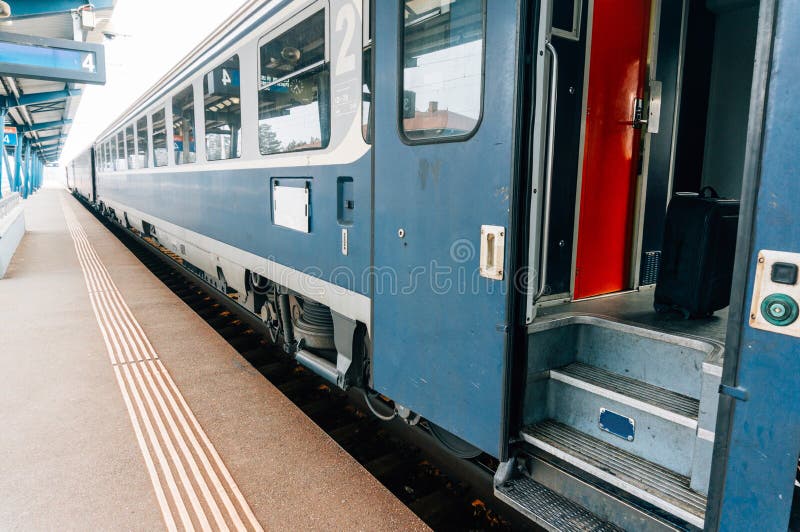
The Dutch train company is called "Nederlandse Spoorwegen" or "NS" and has a page about traveling with a bike. You do need to purchase a ticket for your bike, but your tickets are valid for a destination on a given date, and do not restrict you to a particular time, so if you have to wait for space in a next train, your ticket will still work. This is a national company so train travel is standardized. However, the same national tracks are also used by the international trains, and you may see those on the time table, and special tickets are required for those, pretty sure. You buy tickets on the NS.NL site, or at the station at a vending machine or - if you are feeling very brave - with an actual human.
bike. You do need to purchase a ticket for your bike, but your tickets are valid for a destination on a given date, and do not restrict you to a particular time, so if you have to wait for space in a next train, your ticket will still work. This is a national company so train travel is standardized. However, the same national tracks are also used by the international trains, and you may see those on the time table, and special tickets are required for those, pretty sure. You buy tickets on the NS.NL site, or at the station at a vending machine or - if you are feeling very brave - with an actual human.
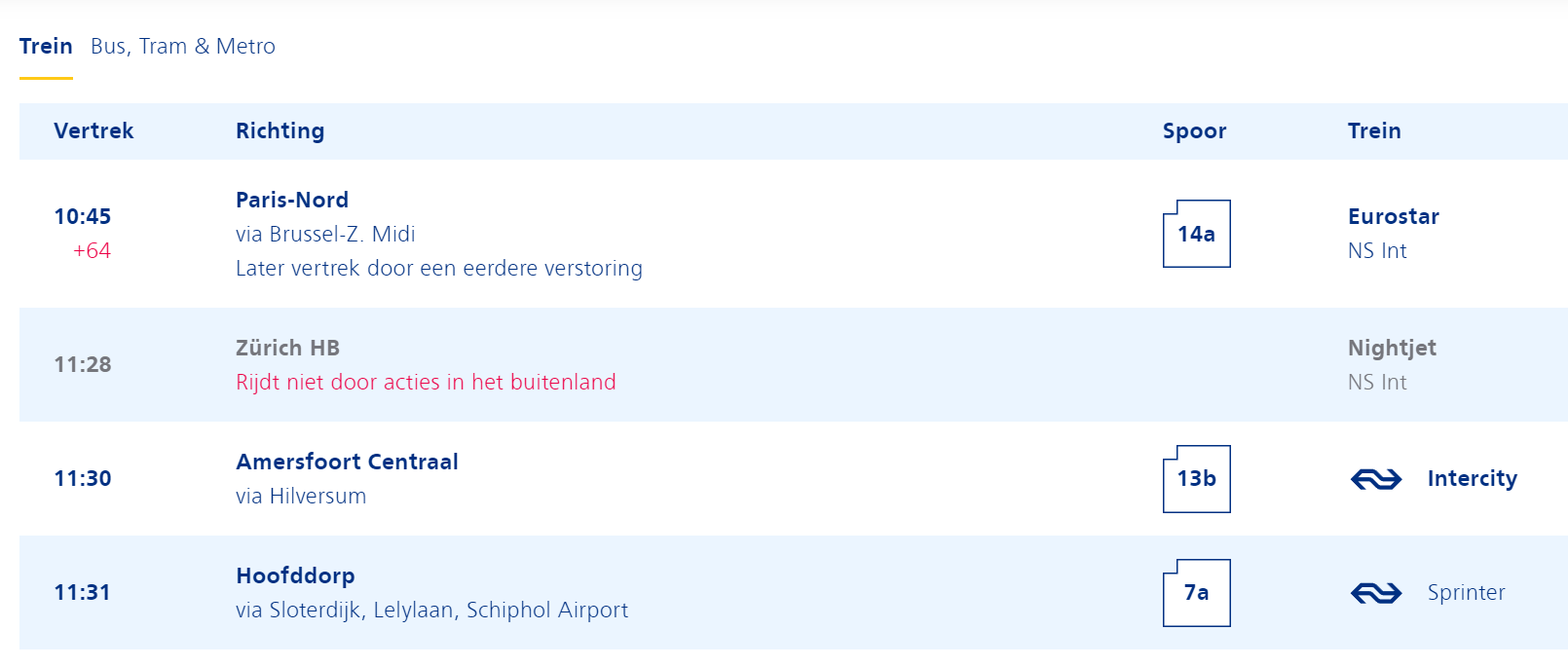
Train route information in the NS site is provided based on the destination, and shows the departure time with any current delays, and any major stops along the way. The third column shows the platform (and you can find the map for most stations online), and the last column the type of train:
- Eurostar is one of the international trains
- Intercity tends to be a faster train with fewer stops
- Sprinter focuses on more local trips with many stops
- Sneltrein is a faster train, and - as you guessed - the 'stoptrein' does a lot of stopping.
However, when picking your route: check the projected arrival time - sometimes taking the slower train that leaves sooner actually gets you there earlier.
Belgium
 We took the train from Ghent to the north of the Netherlands. The Belgian train company is called "SNCB" for Société nationale des chemins de fer belges but uses the neutral stylized letter "B". For any travel in Belgium, it is important to know whether you are in the Flemish (Dutch) or French speaking part of the country, so you can adjust your expectations. As with any of the European rail companies, you can book your international ticket with any of them, and transit is super smooth. The SNCB has a separate bike compartment in a few of the carriages, requires a ticket for your bike, but no time reservation. We spent a lovely time with several other biking enthusiasts comparing biking war stories.
We took the train from Ghent to the north of the Netherlands. The Belgian train company is called "SNCB" for Société nationale des chemins de fer belges but uses the neutral stylized letter "B". For any travel in Belgium, it is important to know whether you are in the Flemish (Dutch) or French speaking part of the country, so you can adjust your expectations. As with any of the European rail companies, you can book your international ticket with any of them, and transit is super smooth. The SNCB has a separate bike compartment in a few of the carriages, requires a ticket for your bike, but no time reservation. We spent a lovely time with several other biking enthusiasts comparing biking war stories.
Germany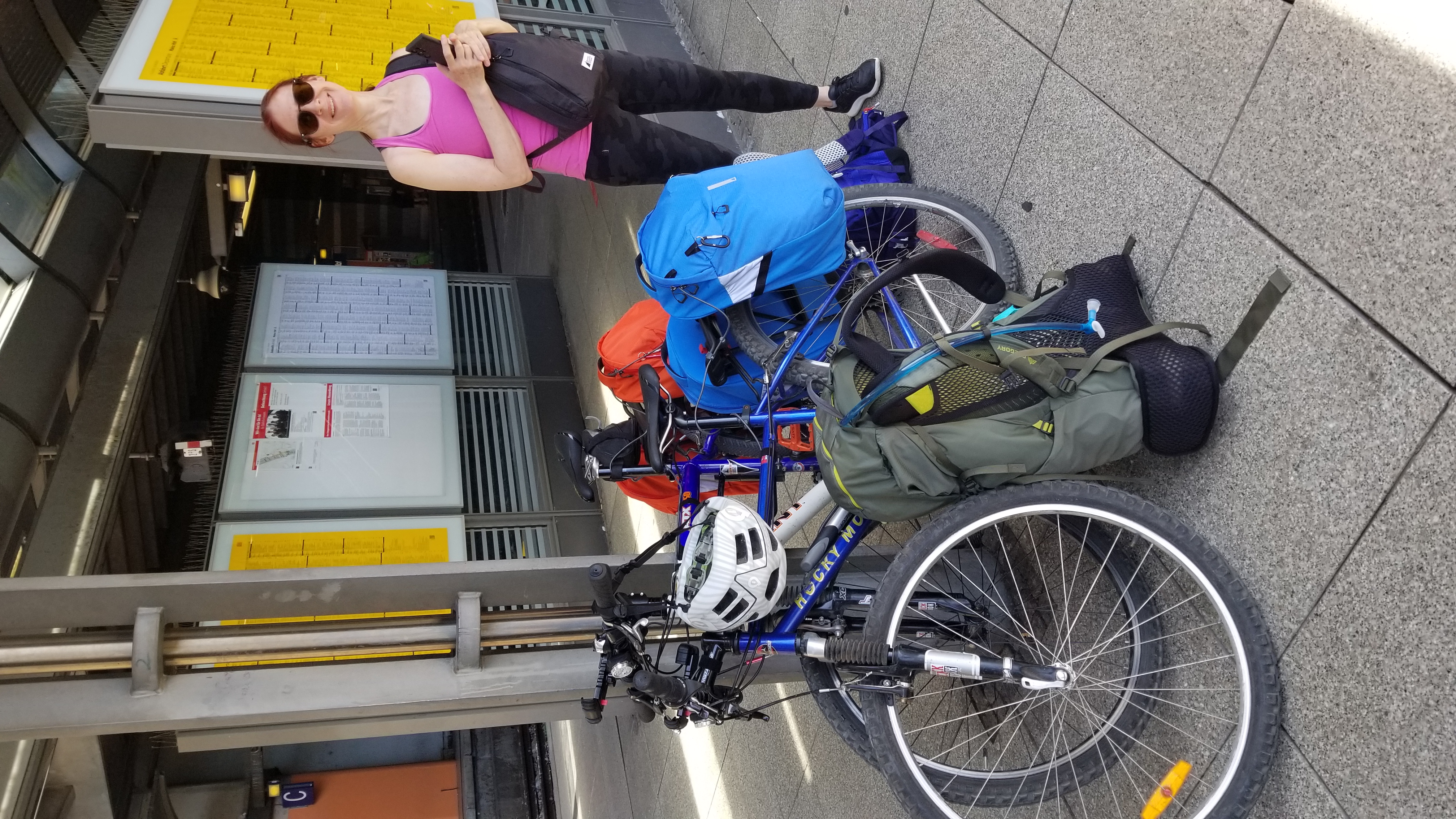
The German rail is operated by the Deutsche Bahn and that is also where you book your tickets. Their mobile app is pretty awesome and gives you a heads-up on any issues with the travel you've booked as well reminders. Note that "Hbf" stands for Hauptbahnhof, i.e. Central Station.
You need a special ticket for the bike and on the longer distance trains ("ICE" - Intercity Express) you need to reserve a dedicated spot for your bike as well. Regional trains allow you to load your bike into a free space - but you still need a ticket.
On the Deutsche Bahn website, enter your departure and destination stations. To find connections that allow for bikes, go to 'modify details' and select 'bicycle transport possible'
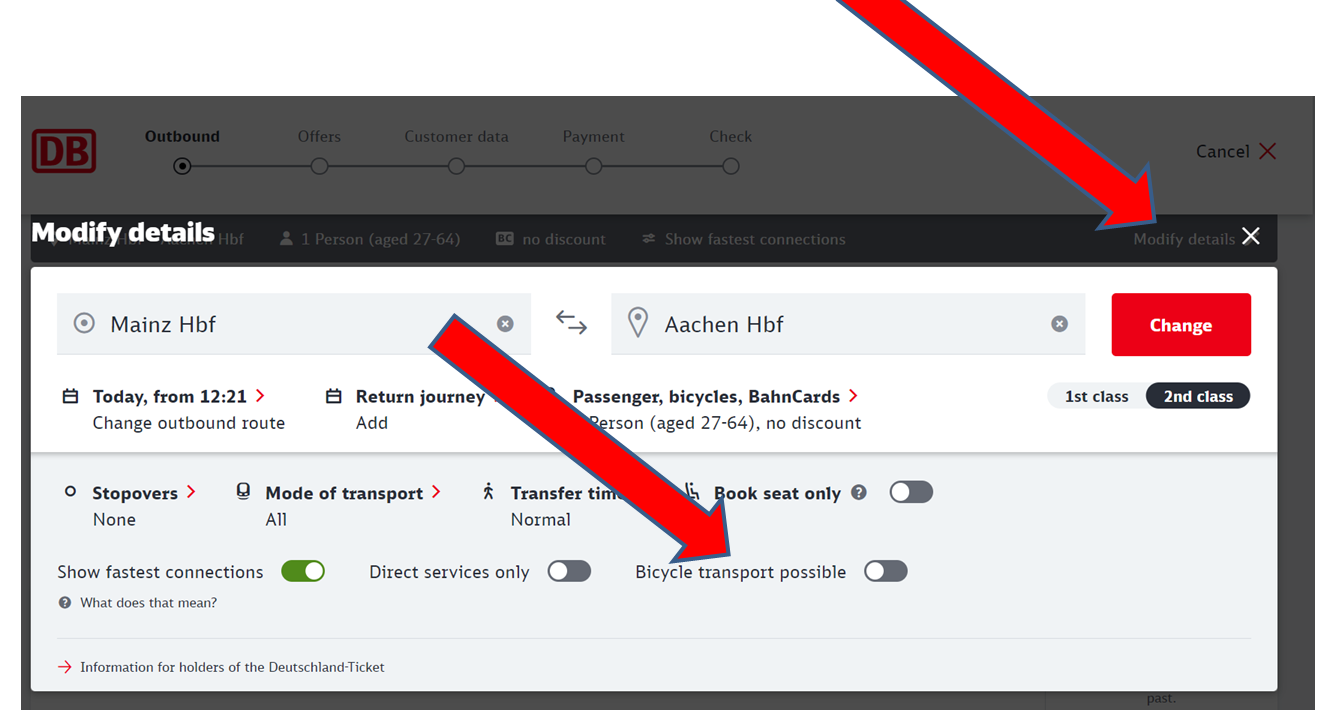
I distinctly remember when I booked, the route mentioned 'bike spots still available' or 'no more room for bikes' but I can't seem to find that now.

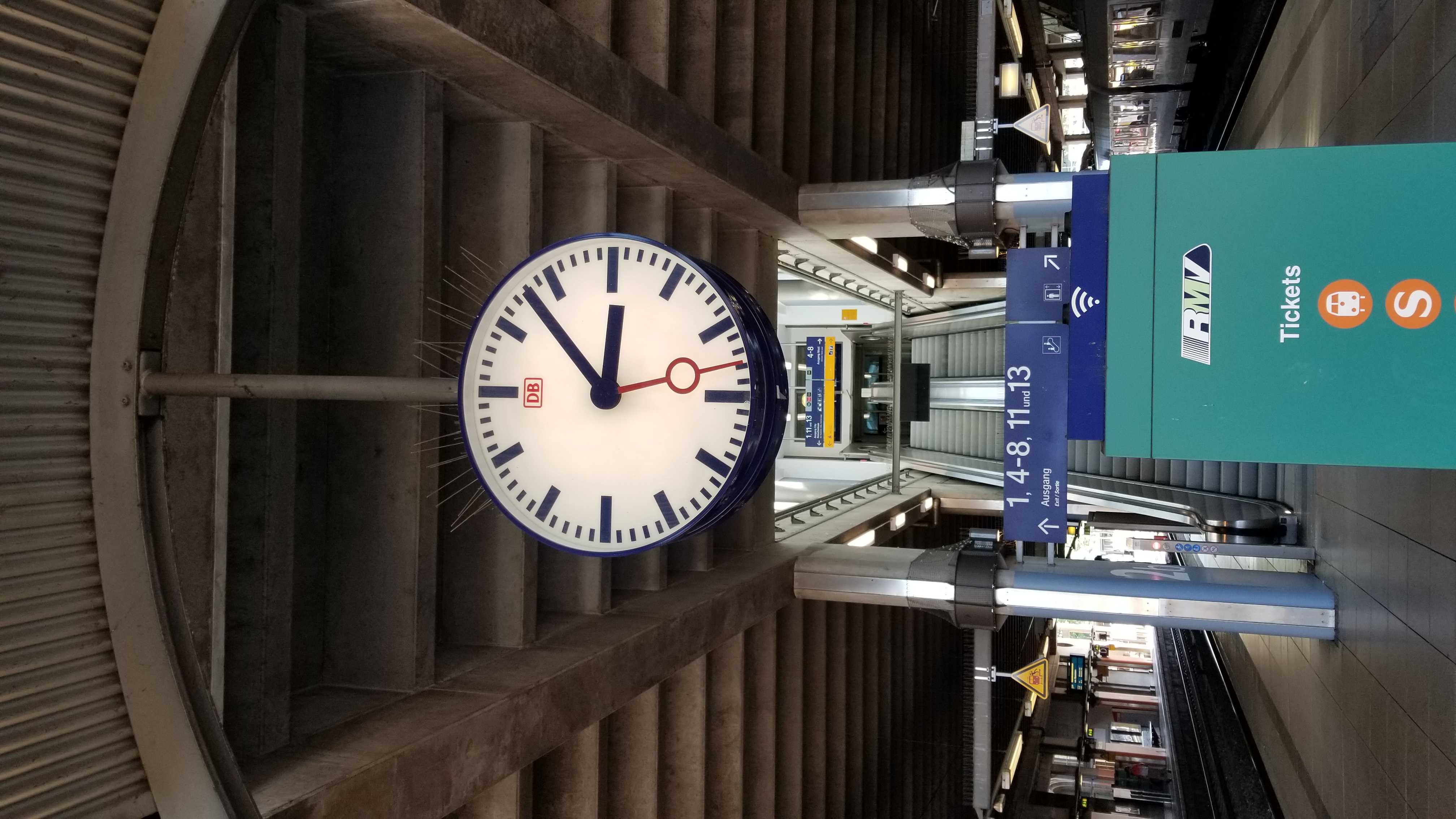 The type of trains you'll see are:
The type of trains you'll see are:
- "RE" which are regional
- "ICE" which are the intercity express, faster and longer distance
On the German "ICE" trains, you book for a specific departure time when you book yourself a seat and your bike a spot - if you miss your train you lose your reservation. On the "RE" trains you need a ticket for you and for your bike, but just like the Dutch trains, it is not for a specific departure time - and if there is no room on the train for your bike, you have to wait for the next train. Which may cause havoc if you are trying to make a connection.
The search I remember also allowed you to specify how much time you'd want at a particular connection to change trains, and make sure to give yourself enough. You may have to go up and down stairs with all your gear to get to the next platform over. Even worse, if trains are delayed ("verspätung") - which they seem to be quite frequently - they may route a train to a different platform, and you have to scramble to get there.
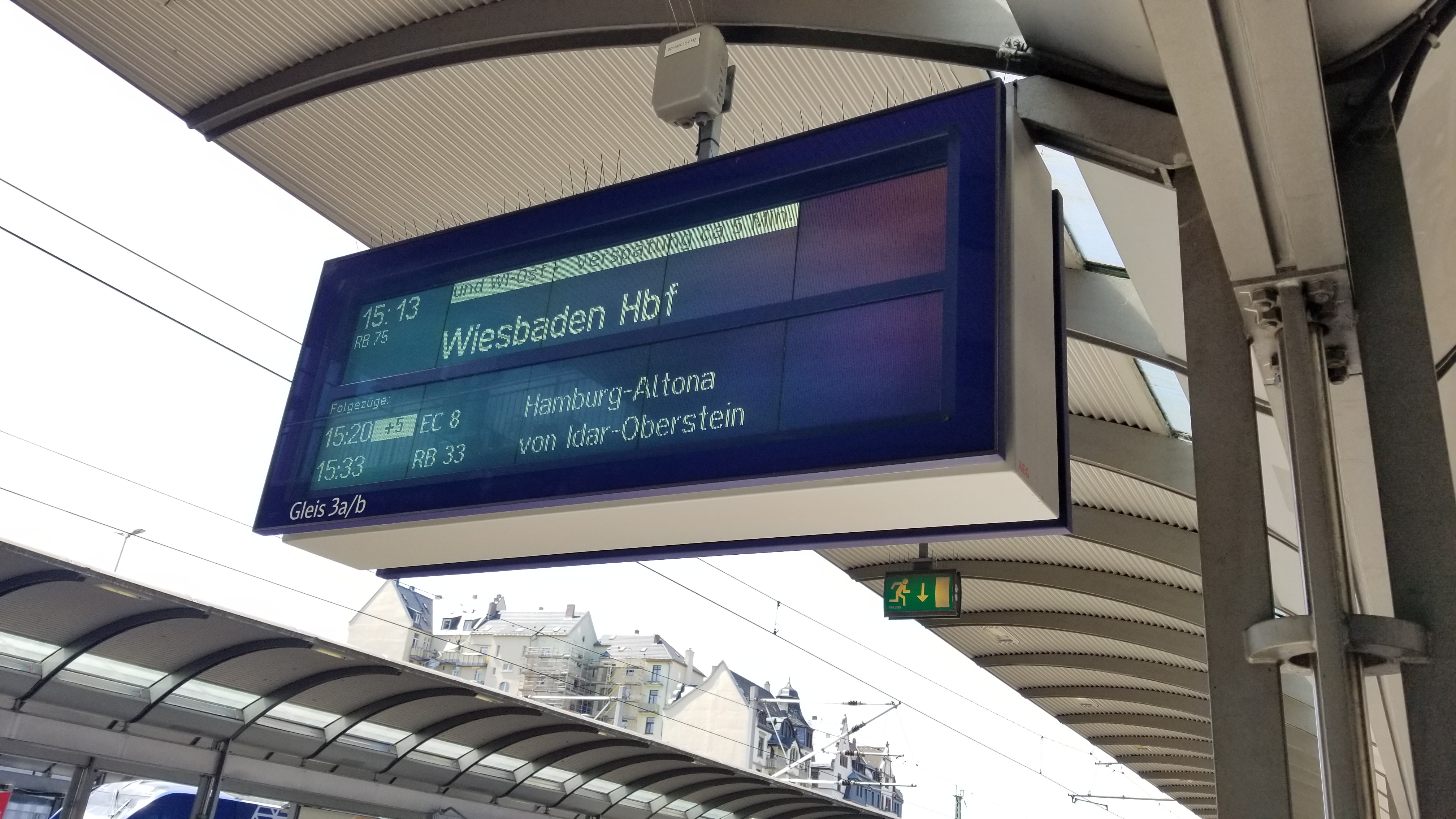
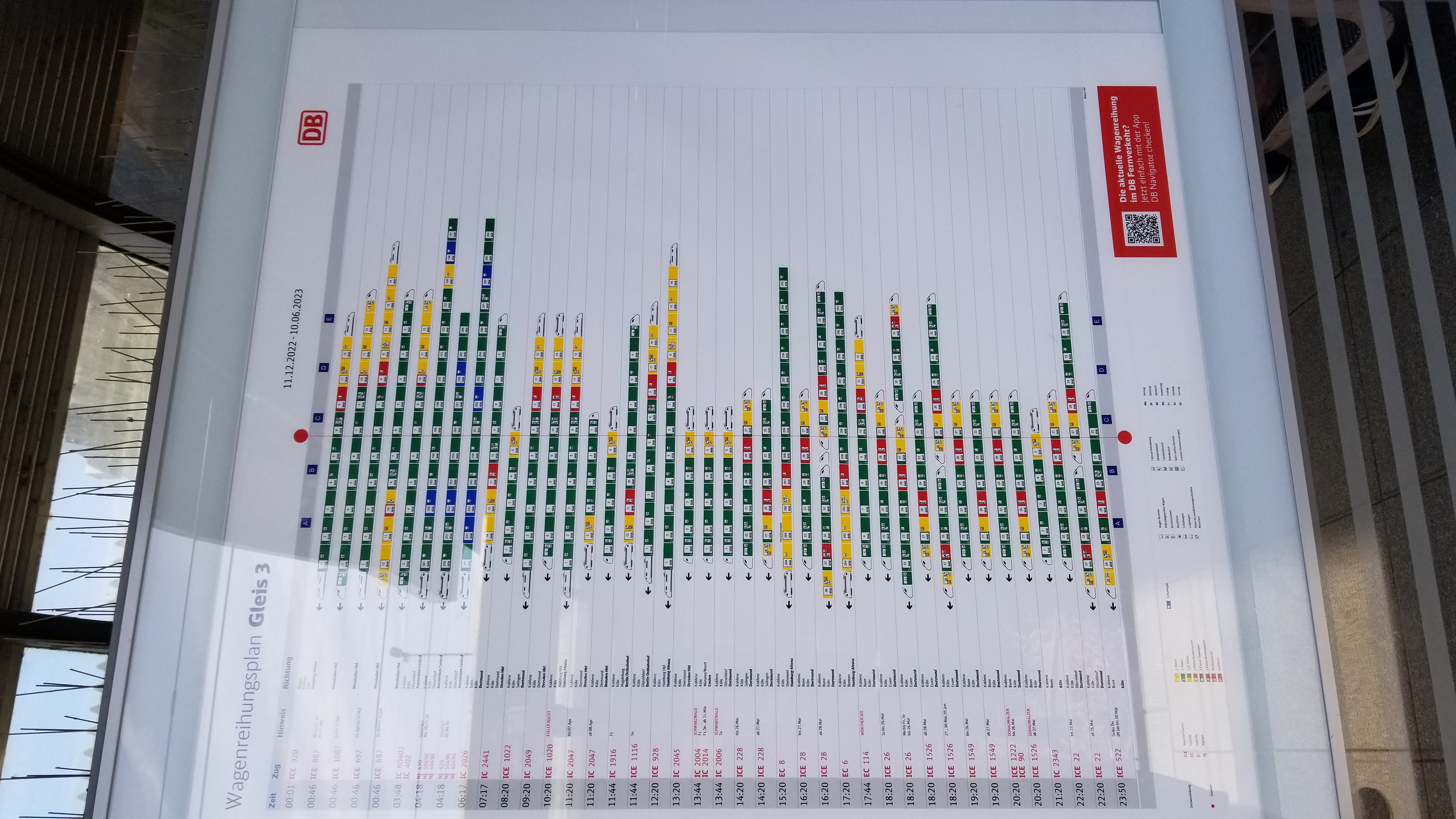
Since you'll only have a few minutes to get yourself and your bike onto the train once the train doors open, you have to stand not just on the right platform ("gleis") but also on the right place on the platform that lines up with where your carriage will stop.
Luckily, there will be posters on the platform that show you what configuration to expect for your train. Check your ticket, it will show you which train carriage your reserved spot is in. There are letter indicating the expected location and those letters are also indicated on the platform.
And even when you think you are fully prepared and ready in the right spot based on your ticket and the information available.... the train may still show up the opposite end, or in a different configuration. Which is why I had to do a panic bike ride without things fully strapped down along the platform in Köln to get to the bike carriage which we saw zooming past to our horror - and these trains are hundreds of meters long and the platforms are full of people!
The carriages with space for bikes will show a bike symbol on the outside. If you see your carriage (whether your number, or one with a bike symbol) glide past you, assume that things have changed and start running along with the train!
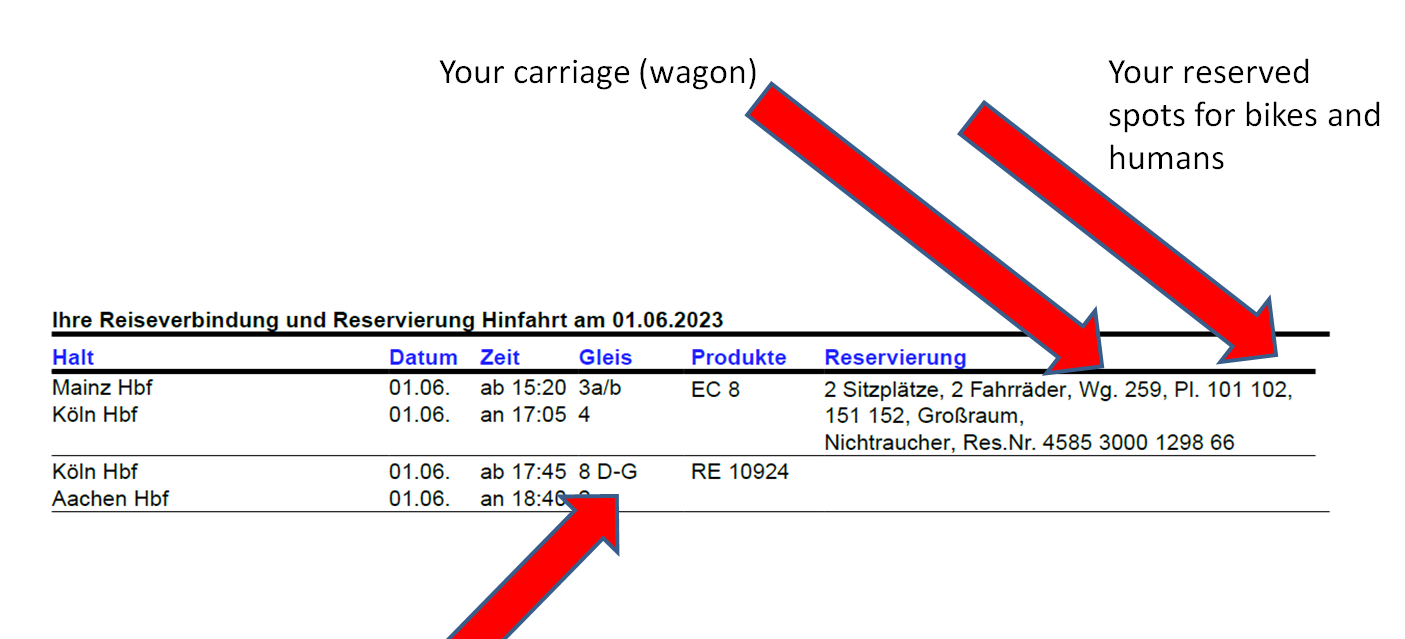
Note that it is not guaranteed that your reserved bike slots and seats are close to each other- have your bike locks ready just in case. We took the panniers off the bikes and with us to the seats unless we could see the bikes - as you can see in the picture, we got lucky one time and could leave the panniers in place.
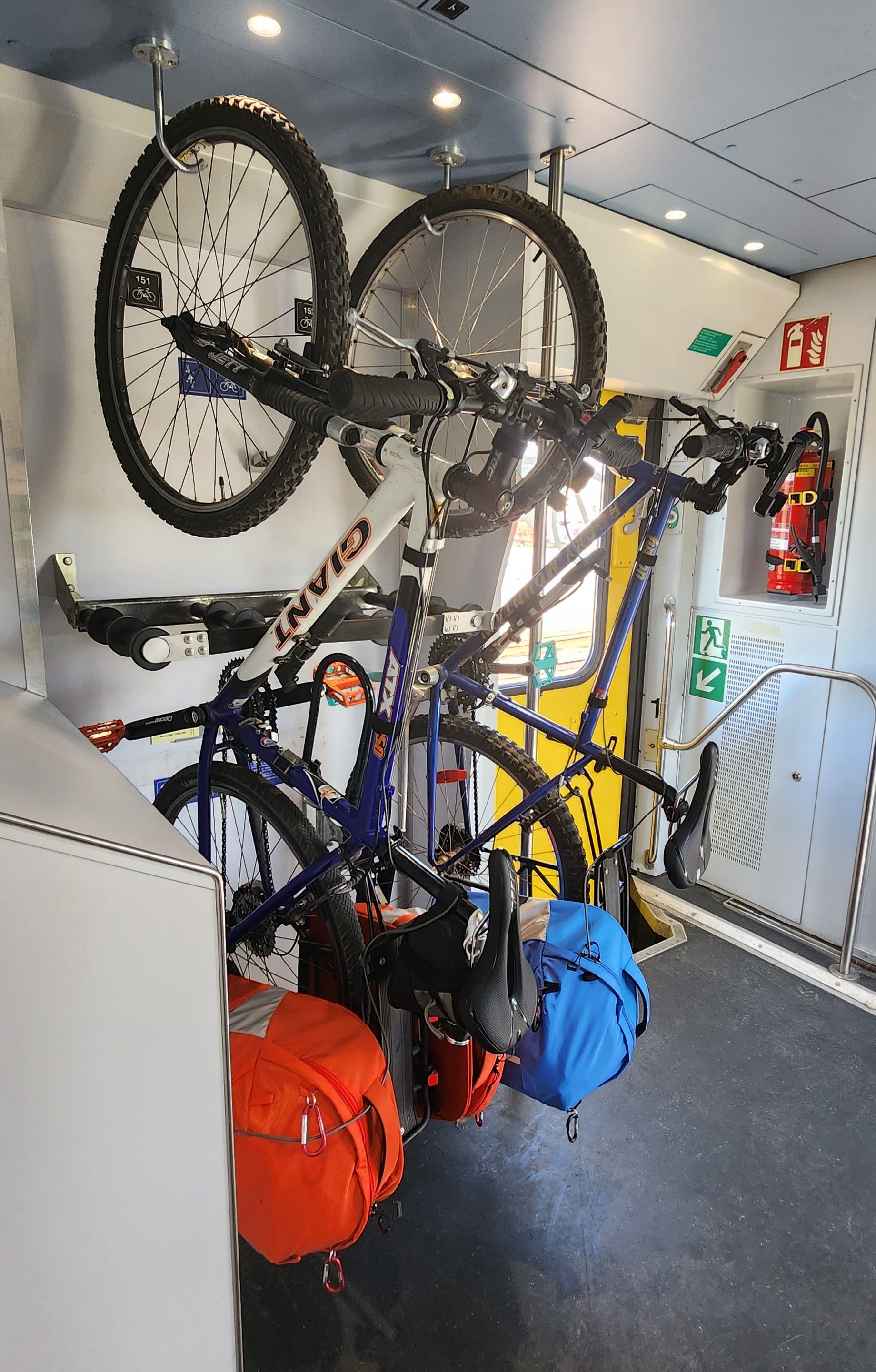
The reserved spots for the bikes on the German trains are very fancy, and the trains super comfortable. Your reserved seats will be clearly marked. 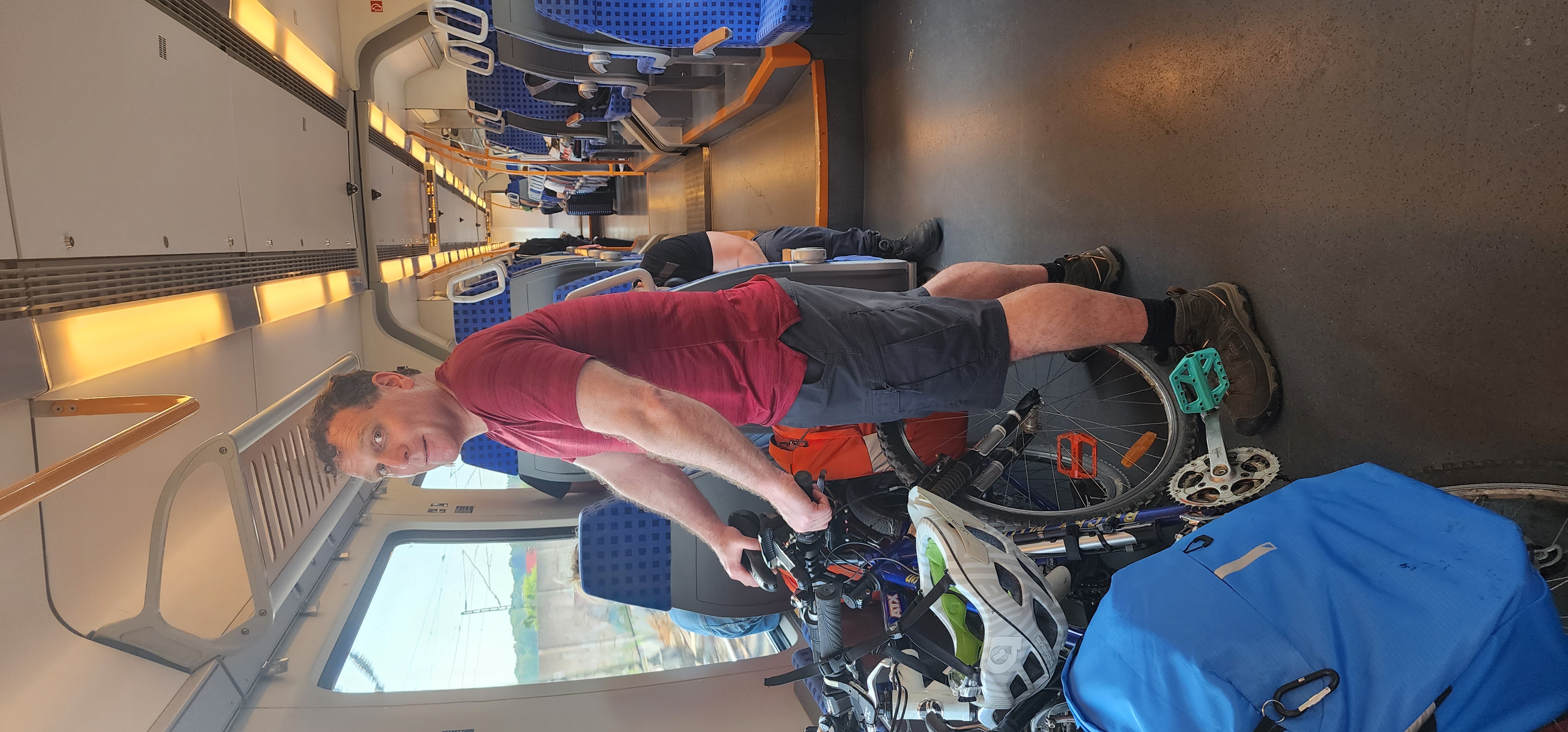
And sometimes you'll want to stay with your bikes rather than find a seat, which means you'll stand for the duration - so be ready for that. Regional trains will just have a bike area, where you can lean your bike up against the wall. And wheels doing what wheels do - these bikes are not likely to stay in place. We stood for the 45 minutes from Koln to Aachen with our hands on the brakes, after sitting in our luxurious seats from Mainz to Köln - but hey, all part of the awesome experience of traveling. Even though some of it was a bit stressful - it was exhilarating at the same time.
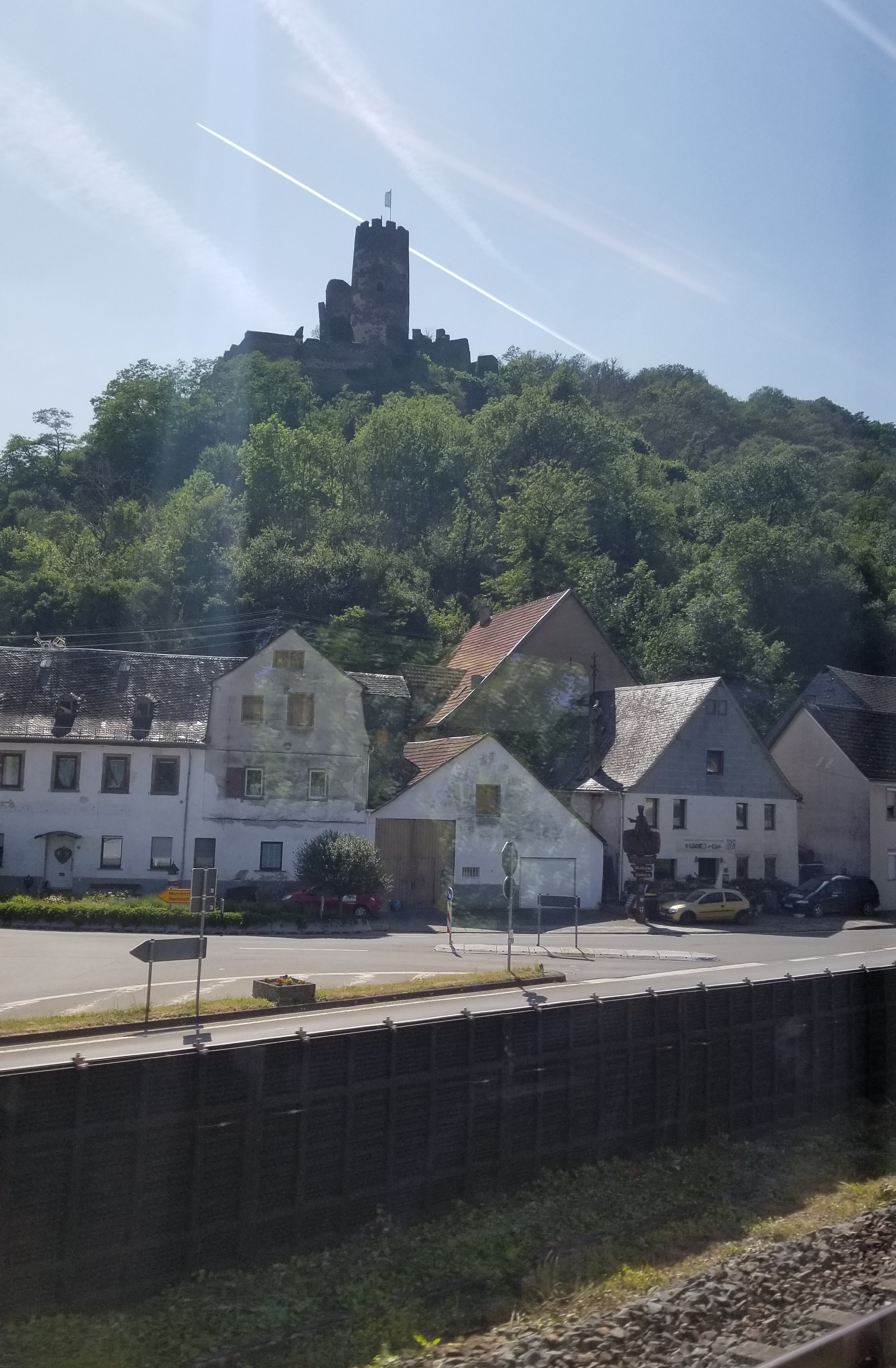
Other resources
Other useful information:

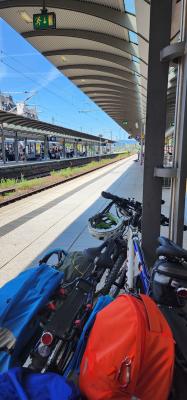
Add new comment